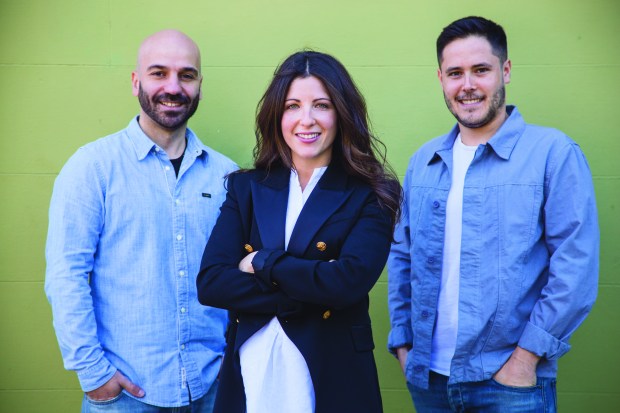The Shazaam Of Shopping, Shnap, Brings Visual Search To Fashion

The fashion visual search category has added a new player with the international launch of Shnap.
Based in Australia, its executives liken their product to the “Shazaam of shopping.” It uses mobile apps or a browser extension to give consumers the ability to shop apparel by taking a photo and then automatically finding a source for purchase as well as price comparisons.
The visual search tool uses artificial intelligence (AI)-powered image recognition technology to identify styles, patterns, colors and other product characteristics to find exact matches or similar products. Those products are ranked on a relative scale and matched to the best retail source. For example, if a shopper sees a Givenchy hoodie on Instagram, she can use the Android or iOS app to snap a photo, upload it, and Shnap will produce sites like Farfetch where the product can be ordered. Shnap takes a cut of its affiliate deals; retailers get traffic from new sources of in-market buyers.
The product is the brainchild of the same team that created fashion search site the urge (lower case). Co-founders Doron Ostrin and Cayley Ostrin both have backgrounds in fashion, product management and eCommerce. The third partner — Dr. Pierre Caserta — is a machine learning (ML) specialist.
“I think the difference is that most visual search picks a domain like Google to focus on or everyone searches on Pinterest to shop for products,” said Doron Ostrin. “Because we built this off the back of the urge, it started off being high-end female fashion. We’ve expanded that because while the high-end is so much of the market, all the products we have are lovable brands. We curate everything. So, once we make visual search for people, even if it’s not exactly the product they’re searching for, they can find something else they think is cool.”
Unlike sites that have no product curation, all stores that Shnap does business with are thoroughly vetted for authentic branded products. The tool aggregates the sites it recommends through a proprietary web crawler as well as data feeds from affiliate networks. The Ostrins have also leaned into the resale and sustainability trends, with about 25 percent of the products available falling in those categories.
“When we checked out the look and feel of Shazaam, we liked the fact that there was one big button,” said Doron. “There’s not much you can do besides kick the button. And when you open our app, there’s one button that says, ‘Tap to Shnap.’ So, we’re literally trying to copy the experience behind the scenes. That technology can be different as this [is] visual and Shazaam is audio, but the experience needs to be as simple as that. Anyone can use it. You click, you get results.”
The team has added filters to the experience, which will be expanded. For example, if a shopper snaps a photo of pink Nike Air Max sneakers, she may get a series of recommendations for that style plus two other Nike products as well as high-end kicks from Alexander McQueen and Adidas Yeezy brand. Maybe she is surprised by the looks of the McQueen shoes and wants to see more. By entering that filter, she can see more styles and more retailers. Doron said ML gives Shnap a leg up in visual search.
“When you’re doing machine learning and AI, the biggest thing that all companies spend money on is building out those data sets,” he said. “You need very clean data to build a machine learning model. … we’ve been doing that over the past two years. And for 10 years before that I was working with Westfield shopping centers in the U.S. building searchable malls. So, we’ve been in the space for a long time feeding product data, working with product data, and it all kind of culminates towards this point. Now with Shnap, we have years of clean data, and we’ve got millions of products in the history, and we’ve built a model that’s very, very good at what it does.”
Shnap’s beta tests have been encouraging. On average over the past month, each beta user is “shnapping” three to five images per week. After it gets the fashion category off the ground, Shnap plans to expand to other categories later in the year, including baby and homewares.
“I think if we can stay true to our vision of saving your time, finding you the best price, finding you the product in your size, we’re in good shape,” said Doron. “If you use it and the experience … lives up to the expectation, and you’ve done it once, maybe twice, then you might start to think, ‘OK, well, I could go straight to Farfetch or another aggregate site, but it’s much quicker if I can do it here.’”
